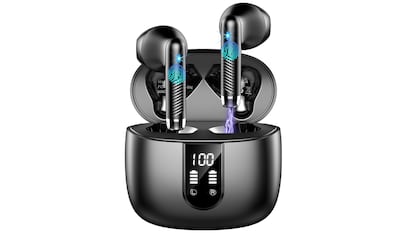Studying lactic bacteria to tackle drug-resistant pathogenic cells
Lactococcus lactis is the name of the bacteria in which this molecular pump was found. The pump, which is one kind of protein, keeps out many drugs and antibiotics harmful to the bacteria - hence the name multidrug resistance protein - which means that the drugs or antibiotics are no longer effective against the bacteria. What makes the finding significant medically is the fact that this pump operates in a similar way to the pumps found in some deadly bacteria and yet scientists can safely study its details using harmless bacteria.
But how can a single pump recognize so many drugs and antibiotics that it has never encountered before and keep them out? To help address this question, I began my doctoral work in the Laboratory for the Structure and Function of Biological Membranes at the Université Libre de Bruxelles. In our lab, we extract the LmrP from the bacteria so that we can take a closer look at it. Once we know how it operates, we can either design new drugs and antibiotics that the pump will no longer recognize or stop it from working so that it can no longer block the entry of drugs and antibiotics.
Now, to know how the pump operates, we must know how it is built; in other words, we must know its molecular structure. One popular yet very difficult approach to get to know its structure is to get large amounts of the purified protein and try to grow a crystal from it. One can then X-ray the crystal and, by studying how the rays bounce off different facets of the crystal, calculate its shape and structure. A computer can analyse the 'interference pattern', that is the exact pattern in which the crystal interferes with the passage of the X-rays, to build a three-dimensional image of the protein.
However, obtaining a crystal of LmrP is difficult; on top of that you need a quality crystal?a crystal that is regular and big enough to yield a clear 'interference' image. Apart from the crystal itself, thousands of variables, such as the amount of LmrP, temperature, pH, and addition of substances that favour crystallization, can affect crystal formation. To study the effect of all these conditions using small amounts of LmrP, we use a machine that delivers tiny droplets of the solution that contains LmrP. By this method, we hope to observe the process of crystal formation in one of the drops before going in for larger quantities to form bigger crystals.
However, obtaining the crystals and studying their structure is tedious and risky, which is why we have developed another approach. The protein pump consists of several hundred building blocks (called amino acids) that form a chain like a string of pearls. The chain folds over to form a characteristic shape. When we shine ultraviolet light on the chain, only few of those amino acids - those called tryptophan to be precise - can absorb the light and re-emit it at a different wavelength just a fraction of a second later. This phenomenon is called fluorescence. The fluorescent links give off a steady glow, which makes them easily visible. The fluorescence t varies depending on the complex shape formed by the folded chain and therefore gives us important clues about the internal structure of the protein.
The changing patterns of the emitted light show how the pump keeps changing its shape during the process of gatekeeping what can enter the cell and what cannot.
In order to precisely dissect the molecular motion we decided to follow invidual trypotophan amino acids by modifying the chain of LmrP, creating a mutated protein that has only one fluorescent link. By varying the position of that fluorescent link, we propose to probe the entire protein in detail.
By tracking the behaviour of the protein in slow motion as it were, we will obtain a clearer picture of the different stages that LmrP goes through in the process of rejecting an antibiotic or a drug. This understanding will help us to subvert the process and develop new drugs effective against cancer cells and pathogenic bacteria.
Using state of the art techniques, we not only seek to increase our fundamental understanding of the protein pumps but also hope to join in the war against bacterial diseases.

Tu suscripción se está usando en otro dispositivo
¿Quieres añadir otro usuario a tu suscripción?
Si continúas leyendo en este dispositivo, no se podrá leer en el otro.
FlechaTu suscripción se está usando en otro dispositivo y solo puedes acceder a EL PAÍS desde un dispositivo a la vez.
Si quieres compartir tu cuenta, cambia tu suscripción a la modalidad Premium, así podrás añadir otro usuario. Cada uno accederá con su propia cuenta de email, lo que os permitirá personalizar vuestra experiencia en EL PAÍS.
¿Tienes una suscripción de empresa? Accede aquí para contratar más cuentas.
En el caso de no saber quién está usando tu cuenta, te recomendamos cambiar tu contraseña aquí.
Si decides continuar compartiendo tu cuenta, este mensaje se mostrará en tu dispositivo y en el de la otra persona que está usando tu cuenta de forma indefinida, afectando a tu experiencia de lectura. Puedes consultar aquí los términos y condiciones de la suscripción digital.
Archivado En
Últimas noticias
Noche crítica en las Urgencias de Madrid: camas improvisadas en salas de espera, personal al límite y hasta pacientes con cáncer sin médico
El villancico de Mariah Carey rompe nuevo récord al mantenerse 20 semanas en el número uno
73.500 personas han perdido la vida en los últimos 25 años en las carreteras españolas, según un estudio de Stop Accidentes
El Congreso abre expediente al agitador Vito Quiles
Lo más visto
- Un trabajador de Acciona asegura que fue el exdirector de Construcción quien le sugirió colaborar con Servinabar, la empresa a la que la UCO vincula con Cerdán
- Eurovisión 2026 cierra la lista de sus países participantes, la cifra más baja desde 2004
- El juez cree que la red de Leire Díez y el exdirector de la SEPI contó con “diversos cargos públicos” para el cobro de comisiones entre 2021 y 2023
- La UE eleva la presión sobre Venezuela al prorrogar las sanciones al círculo de Maduro en plena escalada de Estados Unidos
- Sánchez se mueve para seguir: pacta una cita con Junqueras, anuncia un abono único y descarta tocar el Gobierno




























































